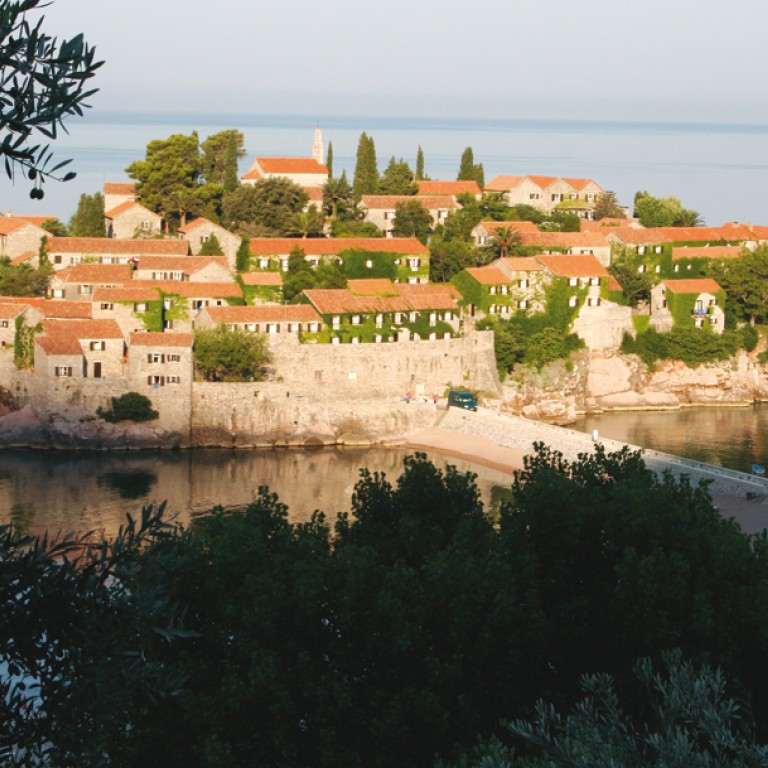
The Next Small Thing
Why tiny Montenegro is making a big splash.
Europe’s best-kept secret is rapidly turning into its next big thing. 2006 was an important year for Montenegro. The former Yugoslavian state gained independence from its larger neighbor, Serbia, became the star location in “Casino Royale,” and bagged an Amanresort. A stopover for the international jet set in the 1960s, Montenegro is back on the tourist circuit - but only just. Tellingly, there’s no dedicated Lonely Planet guidebook yet (go for the Bradt guide instead).
With a population of just 700,000 on 14,000 square kilometers (half the size of Hainan Island), this little country holds some impressive European records: deepest canyon, southernmost fjord, largest bird reserve, last virgin forest, and even some of its tallest people. Every other tiny island seems to be topped by a church, every bend in the road seems to reveal a view more staggering than the last. The people are friendly, the medieval towns beautiful, and the seafood delicious. It’s a little rough around the edges, but there’s a lot to love in Montenegro.
Sveti Stefan
Once a tiny fishing village crammed onto a rocky islet, Sveti Stefan became the country’s ritziest resort back in the 1950s. An entrepreneur bought the whole island, church and all, sank a swimming pool into one corner, converted the cottages into suites and started attracting the likes of Kirk Douglas and Sophia Loren, who taught the chef to cook spaghetti. It’s attached to the mainland by a causeway that non-guests must pay to cross. But if you think it’s exclusive now, wait until it receives the Amanresorts treatment in mid-2008.
Boka Kotorska
Charter a yacht and sail around Europe’s southernmost fjord, a deep-blue finger of the Adriatic that lies within a barricade of jagged mountains. Drop anchor in secluded bays or moor up in red-roofed medieval villages – but hurry past the occasional Communist-era mega resorts. Opposite the exquisite village of Perast lie two islands topped by churches: St George and Our Lady of the Rock. The last was made in the 15th century by fishermen hauling rocks to the site and chucking them overboard. At dusk every July 22, the “Scattering Stones” ceremony re-enacts the creation of the island with a procession of brightly decorated boats. An older ritual, which involved taking pot shots at a rooster set adrift on a raft, is now frowned on. Yachts can be picked up in Kotor, try PP Frankovic, tel: 082-12374.
Catovica Mlini
Kotor
Durmitor National Park
Like something out of “Lord of the Rings,” the mountains and alpine lakes of Montenegro’s largest national park have the wow factor in spades. Just reaching the Durmitor (highest point: 2,575m) is an adventure in itself. Take the switchback “Ladder of Cattaro” from Kotor via the old capital, Cetinje, before starting the four-hour drive through canyons and highland pastures. Stay in a private guesthouse (“sobe”) in Zabljak, a ski resort where the cable cars run year-round. Popular with Serbs and locals, the facilities aren’t exactly five-star, but who cares about power cuts when breakfast is yogurt made with milk from the family goat? Zabljak is a town of landladies, and every travel agent has a list of good, cheap places to stay, or knock where you see a “sobe” sign. Spend the days walking through the Unesco World Heritage national park to the Ledina Pecina ice cave, searching for weird 14th-century gravestones (“stecci”) on the Durmitor Plain, or catching tadpoles at the Black Lake. At night, retire to the roaring fire and free-flowing vranac at Javorovca Restaurant, where every meal starts with homemade bread, fresh cream cheese and local honey.
Rafting the Tara
Skadar Lake
At 40,000 hectares, Skadar is the largest lake in the Balkans, shared between Montenegro and Albania. An important wetland, it’s the last remaining breeding ground for pelicans in Europe. More than that, it’s a lovely place, especially in late afternoon when the islands and mountains are mirrored on the waters. Take a sunset cruise from the main harbor, Virpazar, through the water lilies and prolific birdlife to the idyllic village of Rijeka Crnojevika, or across to the island of Grmozur, a Turkish defense later converted into Montenegro’s Alcatraz. Then settle down for a meal of grilled fish on the terrace at the Pelikan Guesthouse (tel: 081 711107) – a favorite spot of a deposed Montenegrin prince – where every bill comes with a pot of fresh herbs to take home.
Budva
Been wondering where all those new tourists go? You’ll find them on the pebbly beaches of the Budva Riviera in August, jammed in with thousands of locals, playing on the water ski circuit, taking trips in a flying boat (half Zodiac, half microlight) or lolling about on the wavelets in pedalo boats with dinky slides attached. Probably founded by the ancient Greeks, Budva old town (Stari Grad) has been destroyed several times, most recently by an earthquake in 1979. Since then it has been rebuilt in the style of the 15th-century city, so that it almost looks unchanged, except that its narrow streets and shady squares now brim with boutiques, restaurants, bars and visitors burned lobster red by the midsummer sun.

